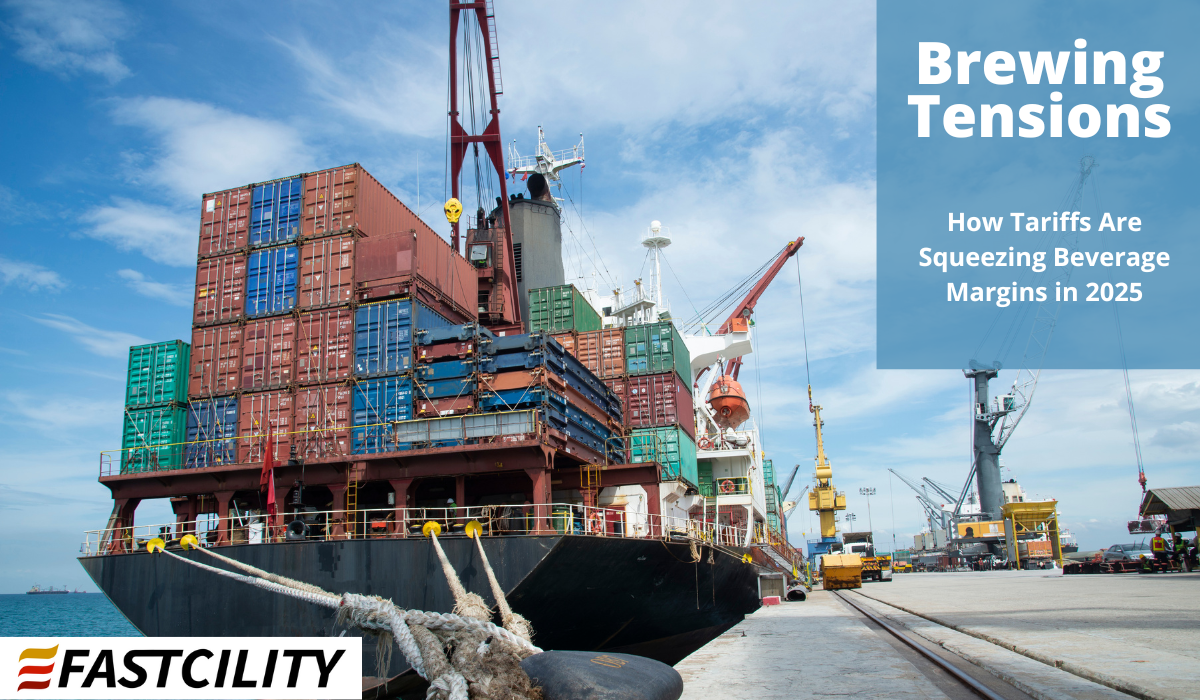Tariffs are biting into the economy as well as the bottom line of the beverage industry.
Starting August 1, the U.S. is imposing a 50% tariff on Brazilian coffee, a move that already has traders rushing to import beans before the deadline [1]. Coffee prices, previously driven by a 70% shortage-based surge, are poised to climb even higher, introducing immediate cost pressure for roasters, cafés, and convenience stores.
But this tariff storm reaches far beyond coffee.
☕ Tea & Native Alternatives
Tea is feeling the heat, too. Tariffs on Chinese and Japanese teas—such as the 24% levy on Japanese goods—are squeezing costs for iconic brands like Ito En, prompting them to consider relocating production [2]. At the same time, U.S.-grown yaupon tea is emerging as a “patriotic” and tariff-resistant option, seeing a renewed market push [3].
🥂 Alcohol: Spirited Concerns
For distilled spirits and beer, tariffs are another headache. The U.S. has slapped 25% tariffs on beer imports and empty aluminum cans, raising packaging and product costs [4]. Meanwhile, European retaliation threatens tariffs of up to 200% on wine, champagne, and whiskey, risking price hikes, product shortages, and even layoffs in bars and bottle shops [5].
🥤 Packaging & Sweeteners: The Hidden Costs
Metal tariffs are also inflating packaging costs. With raw steel and aluminum now hit by duties up to 50%, canned beverages—from soda to cold brew—are more expensive to produce. Additionally, import tariffs on stevia and similar sweeteners may force reformulation or costlier ingredient mixes.
What should we expect through the rest of 2025?
| Issue | Near-Term | By Year-End |
| Bean sourcing | Rush to stockpile before August 1 | Shift to Africa/Vietnam/Honduras; price spikes persist |
| Tea strategy | Native brands gain traction | More U.S. growers enter the market; importers diversify |
| Alcohol pricing | Beer/can costs rising; wine/whiskey uncertain | Full-scale EU retaliation looms; menu reassessments likely |
| Packaging & sweeteners | Labels rising quietly | Bulk buys and alternative suppliers become essential |
Near-term, coffee operators are rushing to secure inventory ahead of the August 1 deadline. By year-end, we’re likely to see more sourcing from Africa and Southeast Asia to fill the Brazil gap [1]. Domestic tea may grow its share of the U.S. market, and retaliatory tariffs on American alcohol from the EU could upend bar menus and supplier contracts [5].
Smart operators are already taking action:
To stay ahead, restaurants, coffee shops, and convenience stores should consider these proactive strategies:
- Secure inventory early: Lock in Brazilian and other coffee before the tariff and identify alternate origins or blends.
- Highlight local tea options: Feature U.S. grown credits—like yaupon—as premium, patriotic alternatives.
- Plan for packaging inflation: Order cans and other materials in bulk now, or explore alternative formats (e.g., glass, cups).
- Reevaluate alcohol pricing: Develop menu flexibility, diversify offerings, and prepare for possible EU duties later this year.
- Watch consumer sentiment: Emphasize transparency—show customers you’re managing costs while still offering quality.
Watch What Happens
Tariffs are evolving from abstract policy concerns into tangible operational challenges for beverage enterprises. Coffee costs are already climbing, and tea, alcohol, packaging, and sweeteners are next in line. By understanding these trends and planning ahead, operators can protect margins, retain customers, and adapt smoothly through the rest of 2025.
References
3. https://www.washingtonpost.com/food/2025/07/13/yaupon-tea-caffeine-tariffs-coffee/


Recent Comments